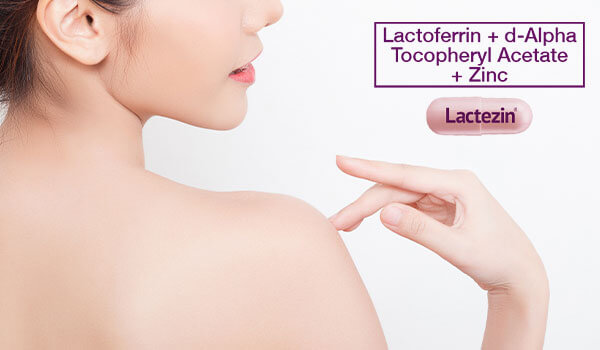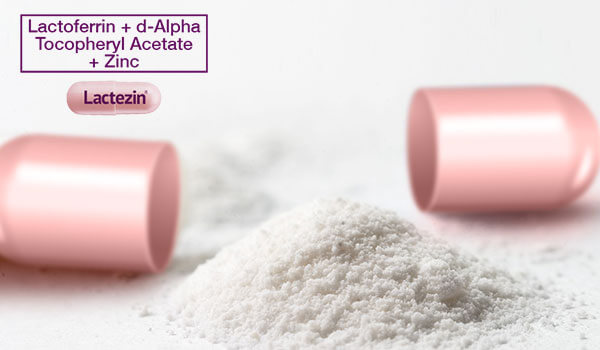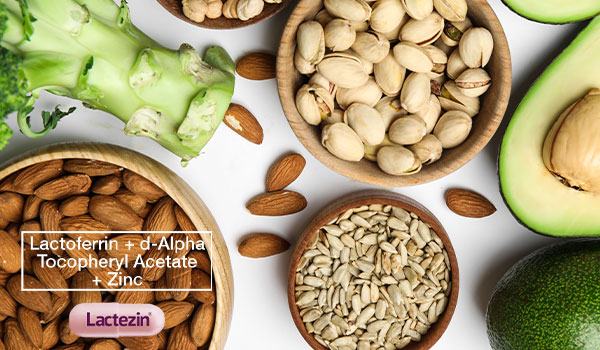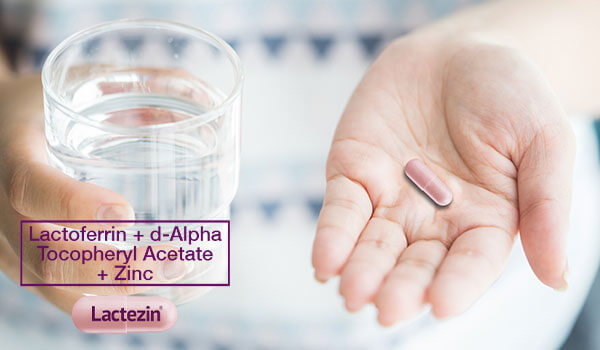The Skin & How it Supports the Immune System

Constantly in contact with various environments and foreign elements, the skin is a big contributor to our safety and overall health. But how exactly does it protect you from infection and diseases? Read on to learn more about the skin, its key functions and how it supports the immune system.
Meet Your Skin: Its Structure & Functions
Mainly serving as a physical barrier between the body’s internal organs and the outside world, the skin is one of the largest organs of the body. Along with its appendages (nails and hair, among others), it comprises 12-15% of the total adult body weight. The structure is as follows:
- The outermost layer is called the epidermis. Containing essential components such as melanocytes, the Langerhans’ cells, Merkel cells and sensory nerves, the epidermis is in a continuous state of rebuilding, repairing and renewing the surface of the skin.
- Beneath the epidermis is the thickest of the main layers of the skin. The dermis makes up approximately 90% of the skin and it’s responsible for regulating temperature and supplying the epidermis with nutrient-rich blood. Found in the dermis layer are the blood vessels, lymph vessels, hair follicles, sweat glands, sebaceous glands, nerve endings, and collagen and elastin.
- Finally, the subcutaneous layer or subcutis which consists of a network of fat and collagen cells. Also referred to as hypodermis, the innermost layer of the skin conserves the body’s heat and protects the inner organs by absorbing shock from the environment. This layer is also where fat is stored as an energy reserve for the body.
The skin is a complex structure of components that work together to serve the main functions of protection, regulation (or thermoregulation) and sensation.
Protection
As previously mentioned, the skin is a physical barrier that protects the vital parts of the body from injury (mechanical, thermal, or any other physical injury), harmful agents, and the excessive loss of fluids (moisture) and protein. It’s also the body’s first line of defense against the damaging effects of UV radiation from the sun and other sources.
Regulation (Thermoregulation)
To function properly, the body has to maintain a constant core temperature. And the skin helps in this concern through alterations to the blood flow in its dermis layer. The constriction and expansion of the blood vessels dictate whether body heat is dispelled or conserved.
- During warm periods, the vessels dilate to let heat out. On the outside, this is visible as the skin reddening with beads of sweat forming on the surface of the skin.
- In colder temperatures, the vessels constrict to prevent heat from escaping the body.
Sensation
Peppered with nerve endings here and there, the skin is the organ for your sense of touch. It works in cooperation with the nervous system to trigger a response to something that you touch, especially if it’s an object that causes harm or pain.
Skin Immunity: The Skin’s Very Own Immune System
The skin serves a critical health function of protecting you from catching diseases. Regular encounters with harmful toxins, pathogenic organisms, and physical stresses are attacks that the skin constantly deals with, from the surface to its inner layers. To protect you, it utilizes various defense strategies and components collectively called skin immunity.
Within the skin is an intricate network of immune cells. When an attack or an injury occurs, these cells work to prevent invasions and infections, and set off a process of tissue reconstruction or skin repair. With acne, it’s important to know that the skin sees the presence of foreign bacteria as an attack. In response, the immune system triggers inflammation and this can sometimes come with redness. This is what becomes pimples, among other types of acne.
Keeping Skin Health and Immunity Up
Help the skin work optimally at keeping your immunity up. What can you do? These skin health-boosting tips should do wonders.
Keep with a Good Skincare Routine
A good skincare routine not only helps you look good, but also helps maintain overall skin health. It helps to first know what your skin type is, and what skin care fits that skin type. From there, you can build an effective daily skincare routine with these five essential steps:
- Cleansing
- Toning
- Applying Serum
- Moisturizing
- Using Sunscreen
Eat Good-for-the-Skin Foods
Good nutrition is important for overall health. What you eat also affects how your skin looks and operates. In addition to staying hydrated, make sure you’re getting the essential nutrients you need for skin health with these foods:
- Plant protein such as walnuts and sunflower seeds
- Bellpeppers (red and yellow)
- Green leafy vegetables like broccoli
- Sweet potatoes
- Fatty Fish
- Red grapes
- Tomatoes
- Avocados
- Soy
- Dark Chocolate
- Green tea
Get Additional Support from Skin Vitamins
Additional support from supplements is a good idea too. The vitamins and nutrients are especially helpful for the skin’s overall state.
- Synthesized when sunlight is absorbed into the skin, vitamin D is a key player in the creation of healthy cells. Studies say that it may help with the treatment of psoriasis.
- Vitamin C is a well-known antioxidant with a role in the production of collagen for the skin. Online features and studies also show that vitamin C can enhance the effectiveness of sunscreens applied to your skin.
- Also believed to help with protection against sun damage, vitamin E is a powerful antioxidant that helps optimize skin repair by encouraging optimized skin cell renewal. Studies have also shown that vitamin E fortifies the immune system and has potent effects on inflammatory acne.
- Lactoferrin is an iron-binding protein that supports the skin and body’s immune system with its antibacterial and anti-inflammatory properties. It targets acne-causing bacteria before it could trigger inflammation and cause pimples.
- Aiding in regulating oil in the skin’s sebaceous glands, zinc also helps heal and rejuvenate the skin with its anti-inflammatory effects. By keeping the skin’s oil in check, zinc contributes to minimizing the occurrence of acne.
With the combined skin health-boosting benefits of lactoferrin, vit. E and zinc, anti-acne drug Lactezin helps in the treatment of acne, boosting skin health, and supporting the body’s overall immune system.
Get your acne questions answered with expert pimple care tips and advice, only from Lactezin.
SOURCES:
https://www.ncbi.nlm.nih.gov/pmc/articles/PMC1022320/
https://dermnetnz.org/topics/skin-immune-system/
https://ecrcommunity.plos.org/2015/06/05/just-skin-deep-your-immune-system-at-the-surface/
https://www.clinimed.co.uk/wound-care/wound-essentials/structure-and-function-of-the-skin
https://training.seer.cancer.gov/melanoma/anatomy/layers.html
https://www.healthline.com/health/4-best-vitamins-for-skin
https://www.healthline.com/health/beauty-skin-care/skin-types-care
https://www.healthline.com/nutrition/12-foods-for-healthy-skin


